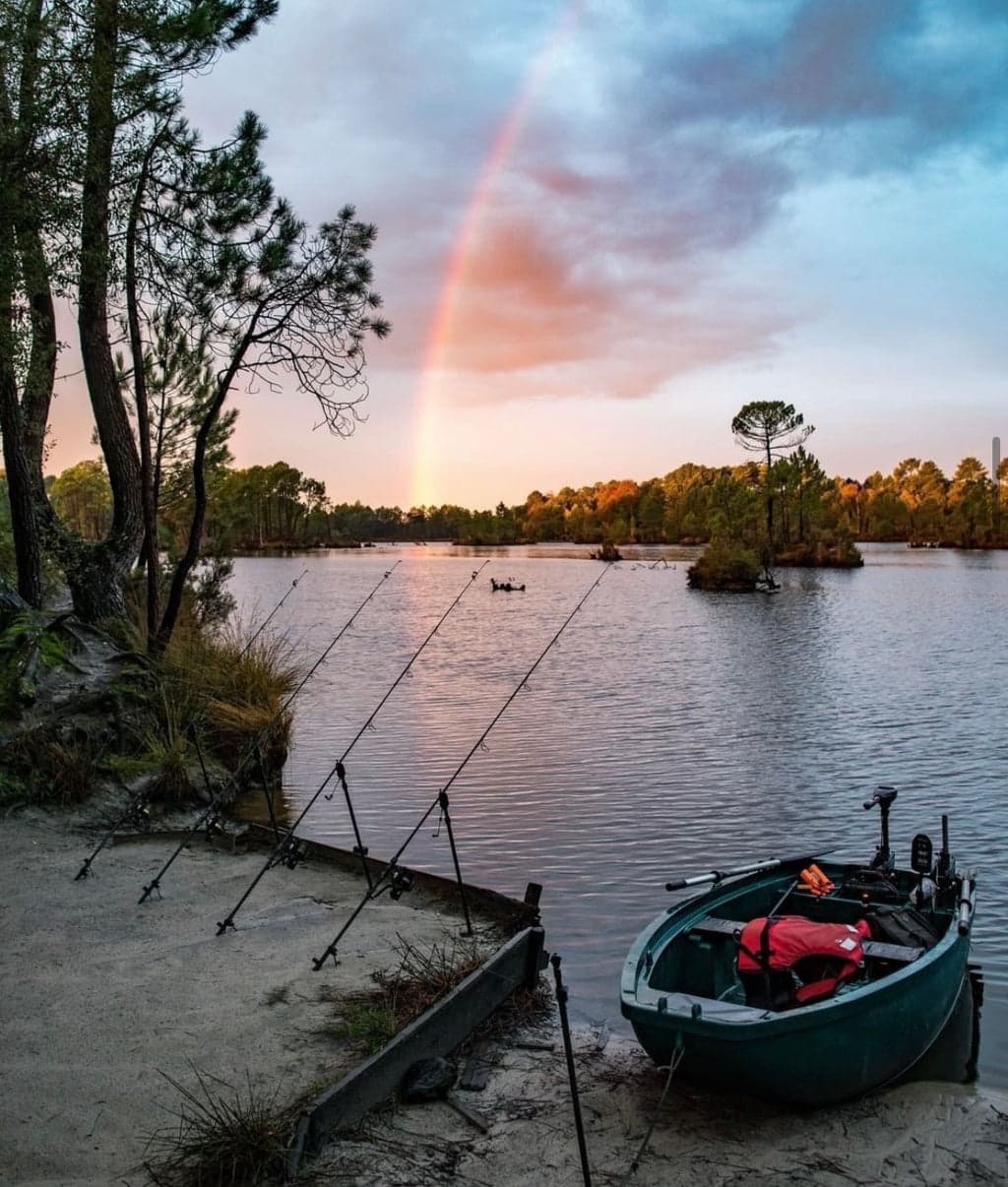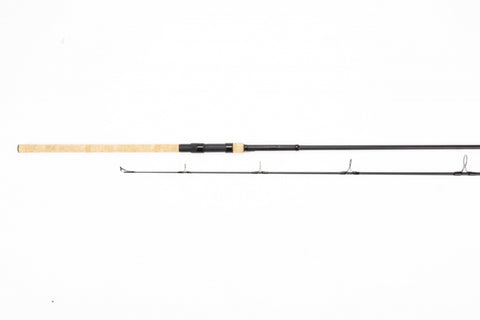on all orders over £100

Spring Carp Stalking Mastery: Techniques, Gear, and Locations
As temperatures rise during spring, shallow waters become a haven for carp, making it the perfect time for anglers to refine their stalking approach and engage with these magnificent fish more intimately. Spring carp stalking requires a blend of skill, patience, and the right gear to outwit your quarry successfully.
This nuanced form of fishing not only challenges the angler but also promises the thrill of close-quarters fishing, where every decision and movement can lead to a rewarding catch.
Spring Carp Behaviour and Habitat
Spring ushers in a period of heightened activity for carp, making it an ideal time for anglers to engage in the art of carp stalking. Understanding carp behaviour and preferred habitats during this season is crucial for any angler looking to succeed.
Spring Carp Behaviour
- Increased Activity: The warmer weather accelerates a carp's metabolism, driving them to feed more aggressively. This heightened activity makes them more visible as they venture into the shallows in search of food.
- Spawning Preparations: Carp also begin spawning preparations in late spring or early summer. During this period, they are often found in groups, frequenting specific areas where the water temperature and conditions are ideal for spawning.
- Surface Feeding: On warmer days, carp can frequently be seen feeding at the surface, taking advantage of the abundant insect life. This behaviour makes them more visible and more accessible to anglers using surface bait.
Preferred Spring Habitats
- Warm, Shallow Waters: Carp are drawn to shallow areas where the sun heats the water more quickly. These zones offer warmth and are rich in food sources such as insects, worms, and crustaceans.
- Marginal Areas: The margins of lakes and rivers become hotspots for carp activity in spring. Vegetation begins to grow back, providing cover and a rich feeding ground for carp. Stalking these areas can be highly productive, especially in the early morning or late afternoon.
- Features and Structures: Carp are attracted to features such as overhanging trees, reed beds, and other vegetation, which offer safety and abundant food. Identifying these features and understanding how carp use them in spring can guide your stalking efforts.
Essential Gear for Effective Carp Stalking
For effective carp stalking in the spring, selecting the right gear is vital. Here are the must-haves for every discerning carp stalker:
Recommendations for Versatile Stalking Rods
- Nash Scope and Dwarf Ranges: The Nash Scope Rod and Nash Dwarf Rods are designed for the angler on the move. Compact, lightweight, yet powerful, they offer the perfect blend of mobility and functionality, ideal for those who prioritise stealth and agility in their carp stalking endeavours.

- Free Spirit Creeper Stalking Rods: Free Spirit Creeper stalker rods are another excellent choice for carp stalking. These rods are particularly suited for anglers seeking a combination of finesse and power. The construction allows for precise casts and effective handling of carp, making them an excellent choice for those challenging stalking scenarios where both subtlety and strength are key.

Key Tackle and Accessories for Stalking
- Compact Unhooking Mat: A compact and portable unhooking mat should always be part of your gear for the safety and protection of your catch. Its use underscores the importance of fish welfare, allowing for a quick, safe release back into the water.
- Lightweight Landing Net: A crucial tool for safely landing your catch. Opt for a net that's easy to carry and manoeuvre yet strong enough to handle large carp. The balance between weight and strength is vital to ensure both the angler's mobility and the fish's safety.
- Minimalist Tackle Approach: The essence of stalking is mobility, which means carrying only what you need. A small, lightweight tackle box with essential hooks, weights, and a selection of baits allows you to move stealthily and quickly between spots without unnecessary burden.

Selecting the Right Bait for Spring Carp
Selecting the right bait for spring carp stalking is an art and a science. Here are some insights into the best baits to choose and how to present them:
Top Bait Choices for Spring Conditions
Natural baits such as worms, maggots, and sweetcorn are highly effective during spring, appealing to the carp's instinctual foraging habits. Boilies, especially in smaller sizes and flavours that mimic natural foods, can also be very attractive. Using these baits sparingly is crucial; over-baiting can lead to carp becoming satiated and less likely to take your hook bait. A little and often approach works best, keeping the fish interested without overfeeding them.

Customising Bait Presentation for Stalking
The way you present your bait can make a significant difference in your success rate. For stalking, consider using methods that allow for quiet, precise baiting.
PVA bags filled with a small amount of bait ensure a neat, compact feeding area, drawing carp right to your hook. Similarly, using surface baits such as bread or floating pellets can be highly effective in spring when carp are likely to feed at the surface. Rigging these baits to appear as natural as possible will make them irresistible to curious carp.
Prime Locations for Carp Stalking in Spring
Ideal stalking spots in spring are characterised by features that offer carp safety, warmth, and abundant food sources. Margins are particularly attractive this time of year, as the sun warms these areas quickly, drawing carp in search of warmth and food. Vegetation, including emerging reeds and grasses, provides excellent cover for carp, making these areas hotspots for stalking.
Snags, such as submerged trees or branches, offer shelter and attract natural food sources, making them prime locations for ambush. Lily pads and other aquatic plants provide cover and attract a variety of insects and smaller fish, creating a feeding ground for carp.
How to Find Carp in Shallow Waters
Finding carp in shallow waters during spring involves a combination of observation and understanding carp behaviour. Early morning and late afternoon are prime times to spot carp as they venture into the shallows to feed and bask in the warmer temperatures.
Look for signs of carp activity, such as bubbles, disturbed water, or the tail patterns of feeding carp. Stealth is key; approach potential spots quietly and observe from a distance to avoid spooking the fish.
Stealth Tactics for Close Quarters Carp Fishing
To master carp stalking, integrating advanced stealth techniques and strategic positioning is essential. This approach goes beyond basic observation, focusing on interpreting subtle environmental cues and carp behaviour to inform your actions.
Approaching Carp with Minimal Disturbance
- The approach to stalking carp should be as unobtrusive as possible.
- Utilise natural cover and keep a low profile to blend into the surroundings.
- Control your silhouette against the skyline to avoid detection.
- Move only when necessary and always with purpose, avoiding quick movements that could send vibrations through the water.
- When near the water's edge, be mindful of your shadow, ensuring it does not cast over the area where carp are likely to be. Soft, waterproof footwear can minimise noise and disturbance as you navigate the bank.
- Consider the noise your gear makes; even the slightest sound can be amplified underwater, alerting carp to your presence.
Strategic Positioning for Optimal Engagement
Balance Between Proximity and Stealth:
- Aim for a position that allows observation of carp routes and feeding spots without being directly in their line of sight.
- Consider positioning upstream in river settings to ensure your scent and visual profile are carried away from the fish.
Environmental Considerations:
- Use the sun to your advantage by keeping it behind you, reducing the likelihood of casting shadows on the water that could alert carp.
- Approach carp downwind whenever possible to minimise the chances of detection through scent.
Patience and Observation:
- Recognise the value of patience; sometimes, refraining from action allows carp to become accustomed to their environment, revealing patterns in their movement or preferred feeding spots.
- Combine a stealthy approach with keen observational skills to identify the optimal moment for engagement.
Effective Rigging Strategies for Carp Stalking
Effective rigging is a cornerstone of successful carp stalking, requiring simplicity and adaptability to match the varied scenarios you may encounter. The goal is to present your bait in the most natural way possible, minimising suspicion from wary carp.
Simple and Effective Rig Setups for Stalking
- Lightweight Rigs: Opt for lightweight and inconspicuous rigs, ensuring they blend seamlessly into the environment. A simple hair rig, paired with a small, critically balanced bait, can be particularly effective, mimicking the natural food sources carp are drawn to in spring.
- Fluorocarbon Leaders: Utilise fluorocarbon leaders for their near invisibility in water. This tactic can make your setup less detectable to wary carp, increasing your chances of a take.
- Hook Size and Type: Select hooks that are sharp and strong yet small enough to be discreet. A wide-gape hook is often a good choice, offering excellent hooking potential without being overly conspicuous.

Adjusting Rigs for Different Stalking Scenarios
- Marginal Fishing: When fishing in the margins, a shorter rig may be more effective, allowing for a more controlled presentation close to the bank. This approach can be beneficial when targeting carp feeding in tight spots among reeds or under overhanging branches.
- Open Water Stalking: In open water, a longer leader can be beneficial to keep the line away from the carp's field of vision. Pairing this with a slow-sinking bait can mimic natural food items falling through the water column.
- Variable Depths: Incorporate adjustable weight systems to quickly adapt to different water depths without changing the entire setup. This flexibility is crucial for stalking, allowing you to respond to the carp's position, whether they're feeding at the surface or on the bottom.
Conclusion
Spring carp stalking offers a unique blend of challenge and reward, inviting anglers to immerse themselves in the fascinating world of carp behaviour and environmental adaptation. It's a time when the waters awaken, and with the right approach, patience, and gear, the opportunities for memorable catches are abundant.
As the season unfolds, each moment by the water becomes a chance to refine your skills, deepen your connection with nature, and experience the thrill of the stalk.
Contact us at CPS Tackle today for all your carp stalking needs this spring, and step confidently into the waters, armed with the right tools and insights to make every moment by the bank count.
Read What Our Customers Think
Need some advice?
Call us on 01827 712297 or email info@cpstackle.co.uk
